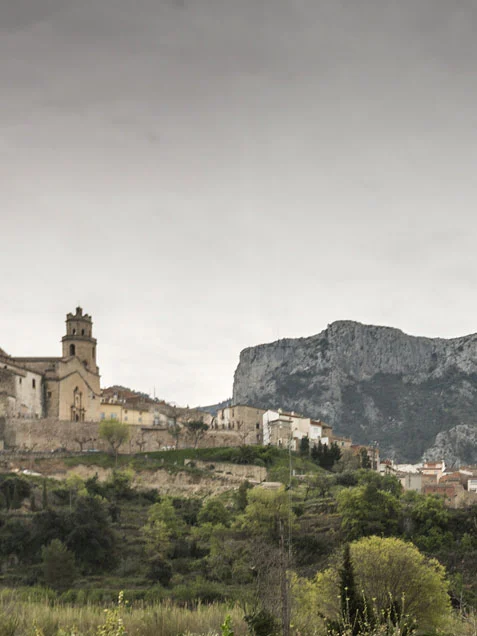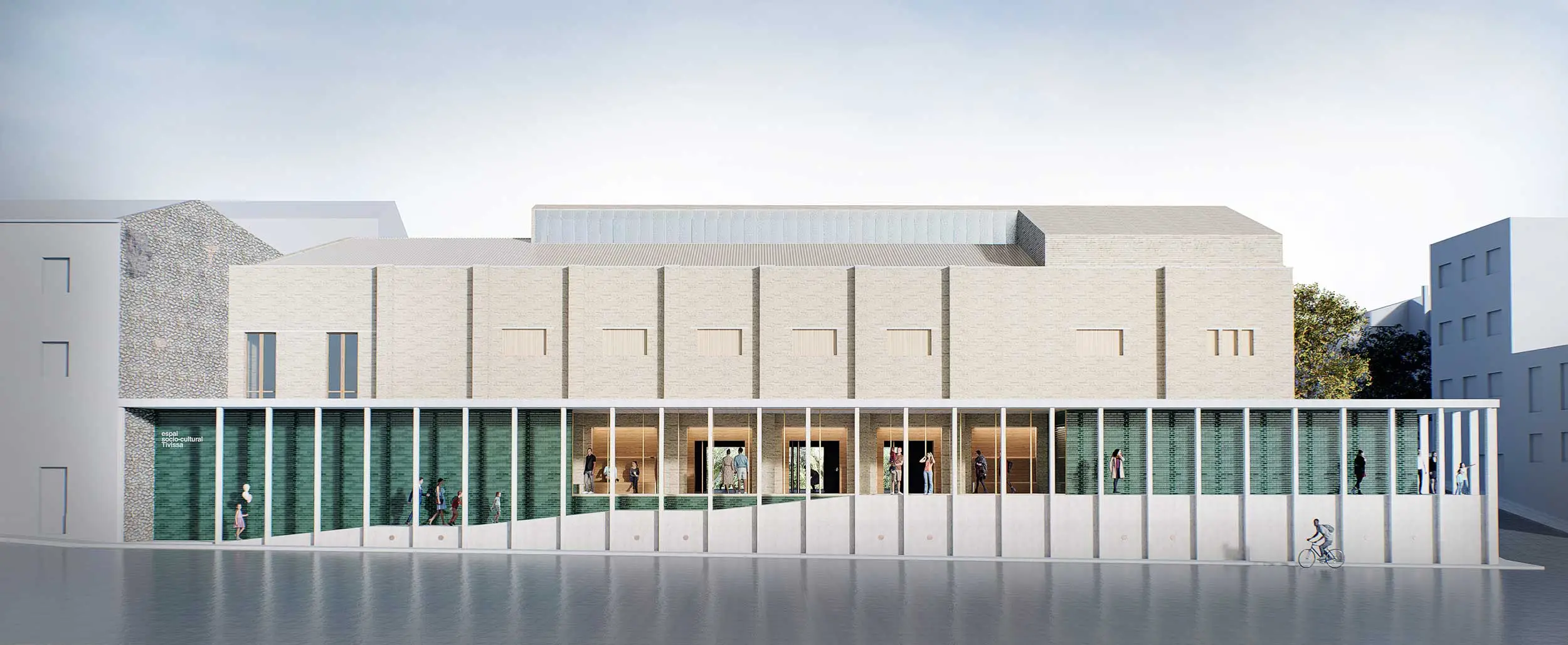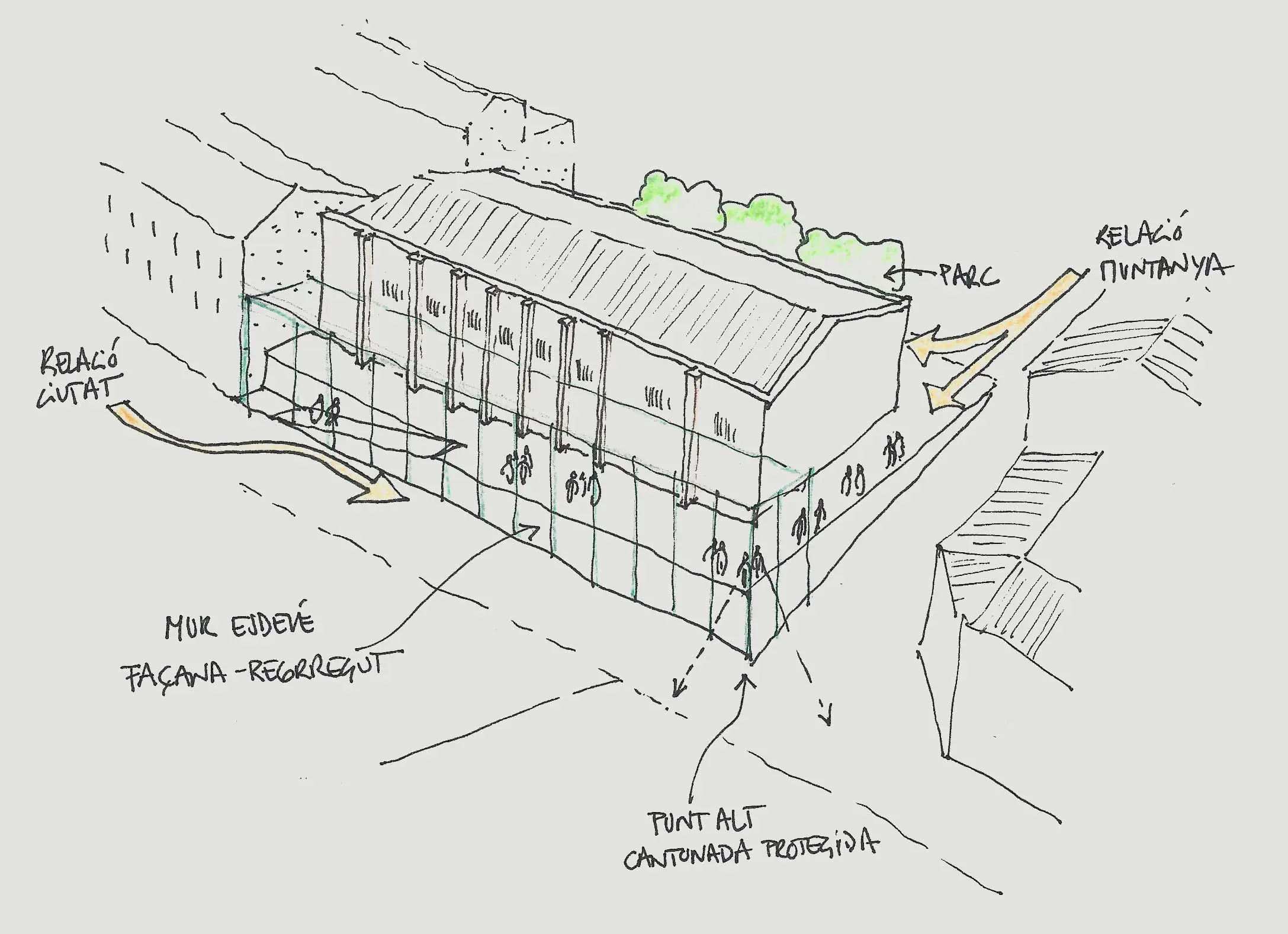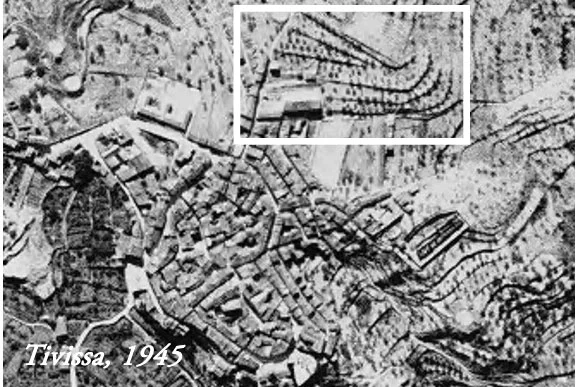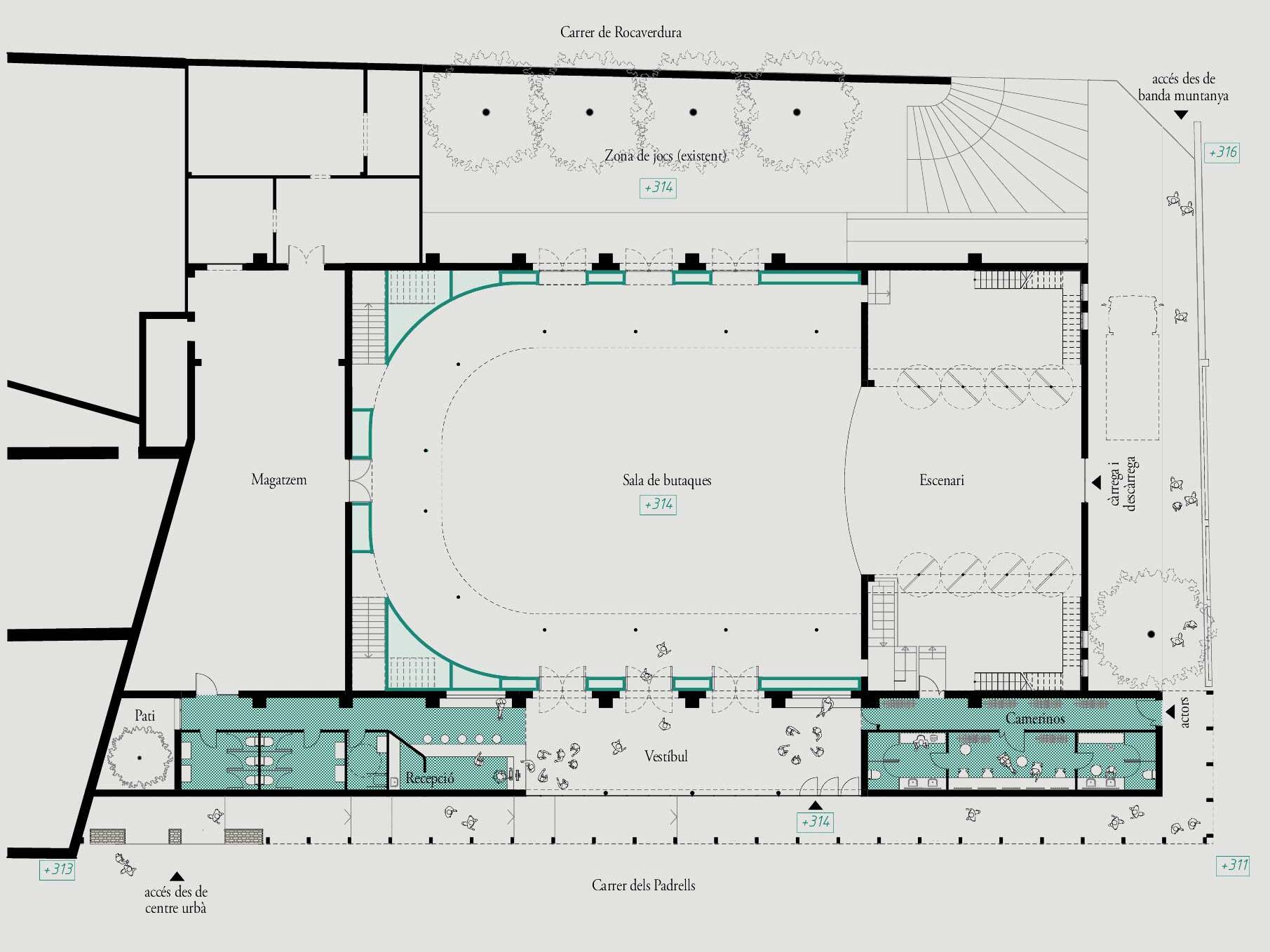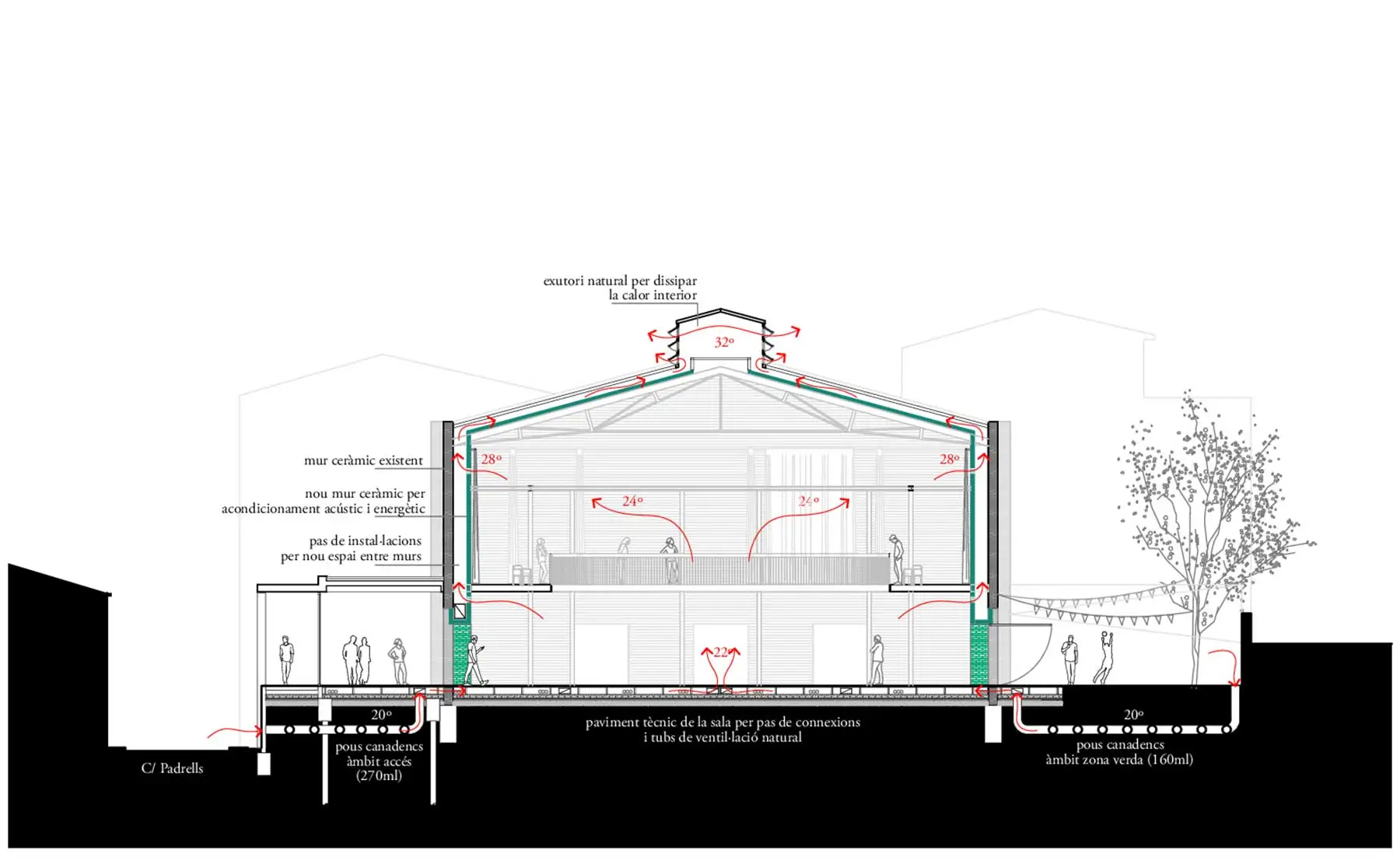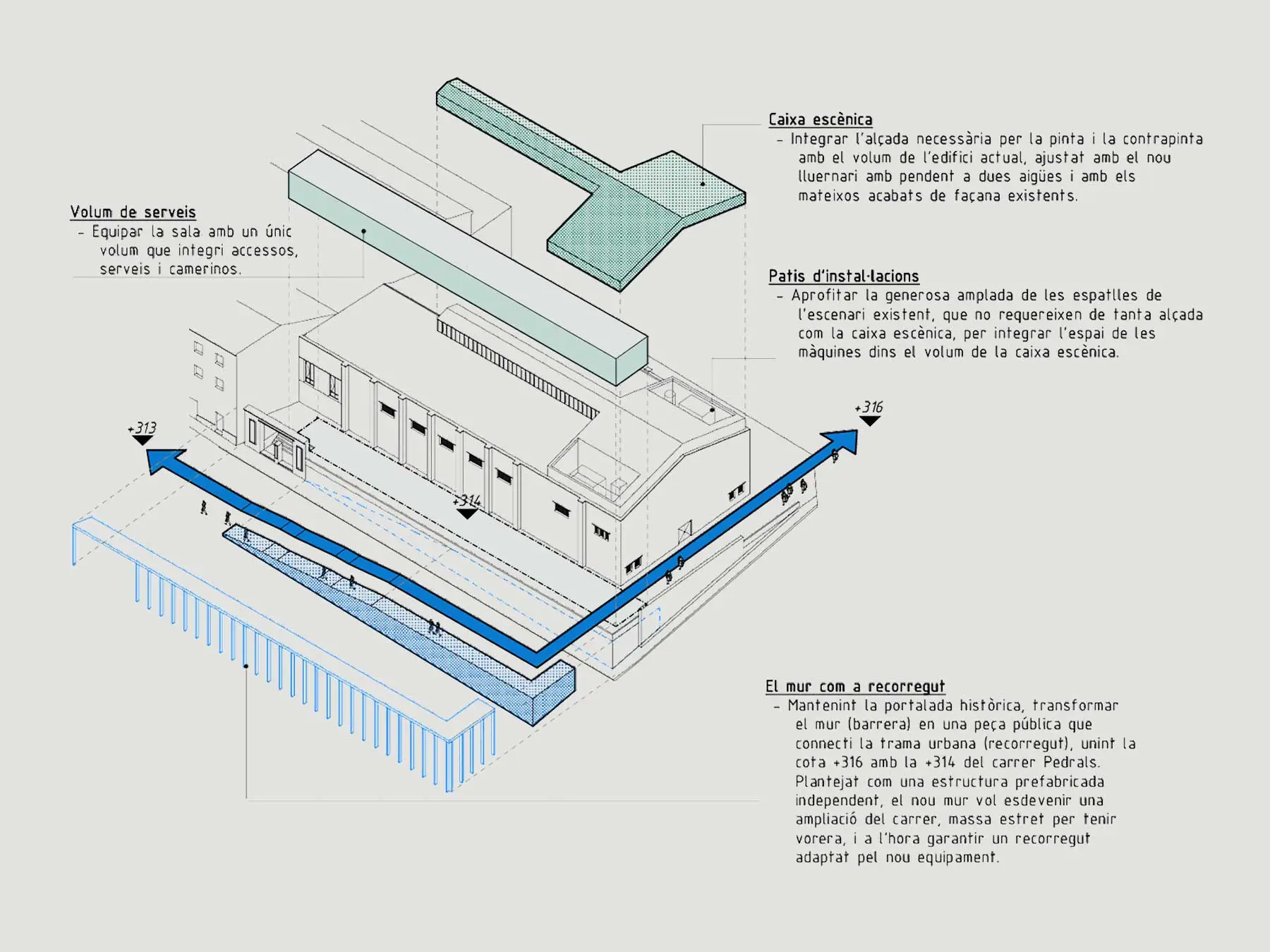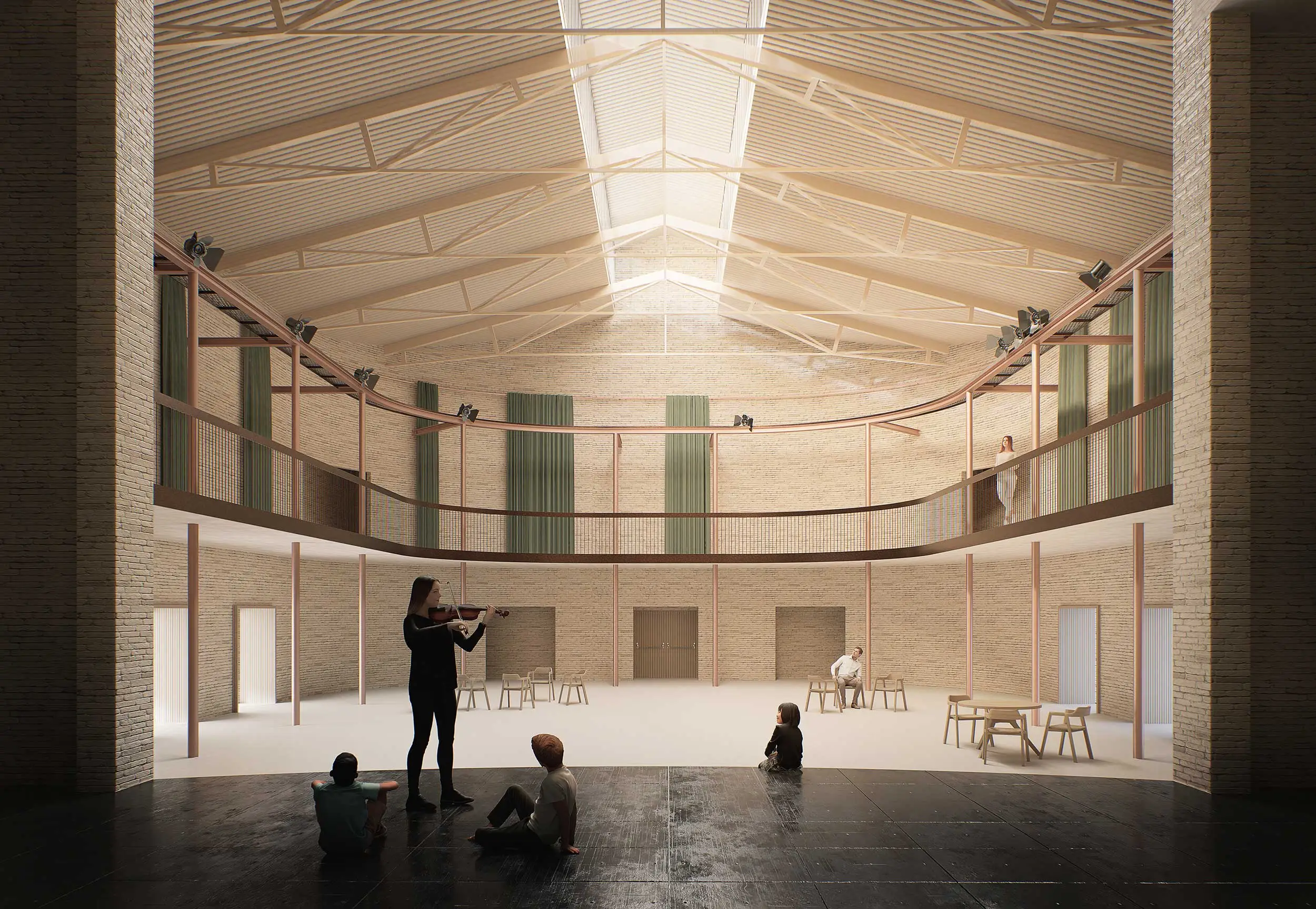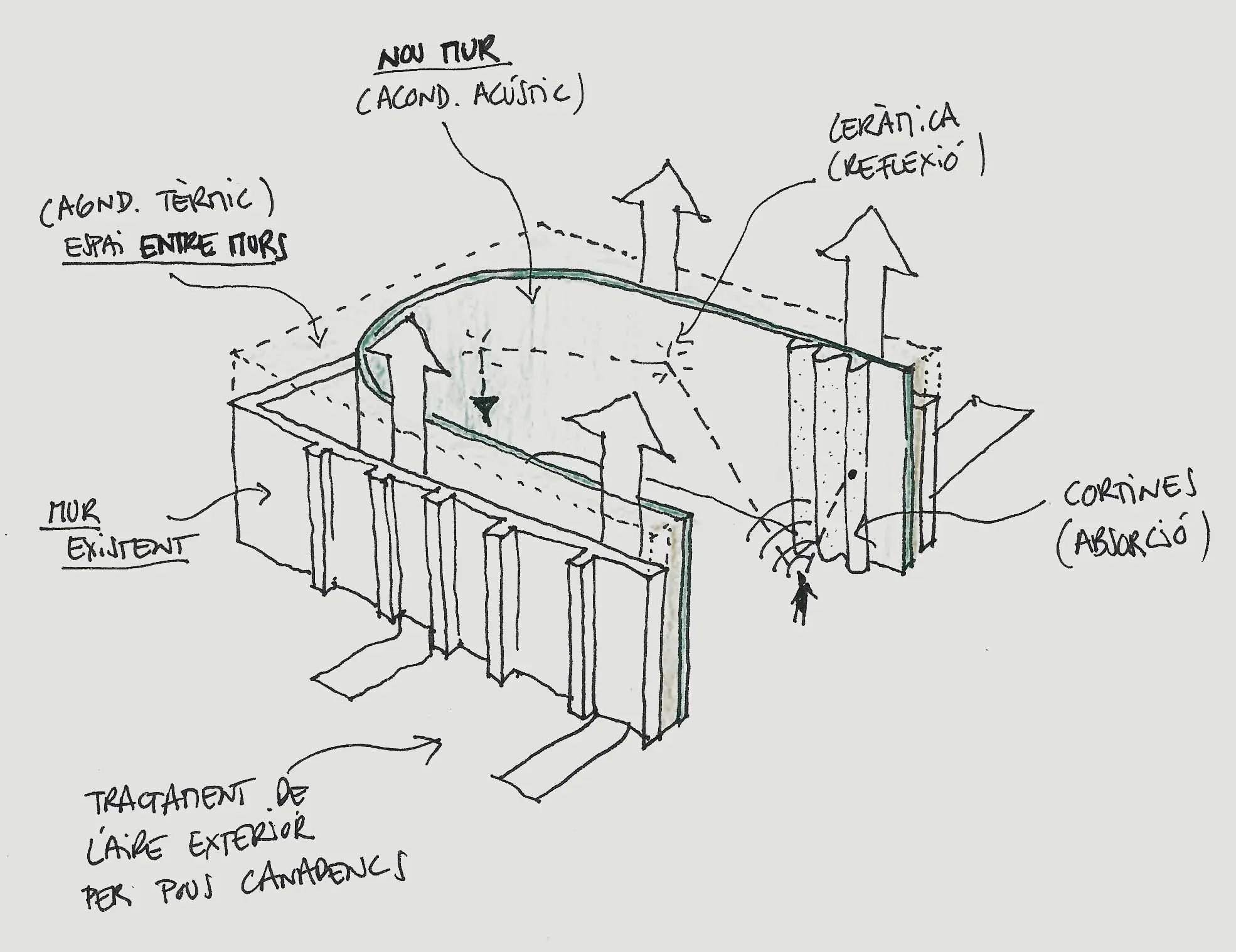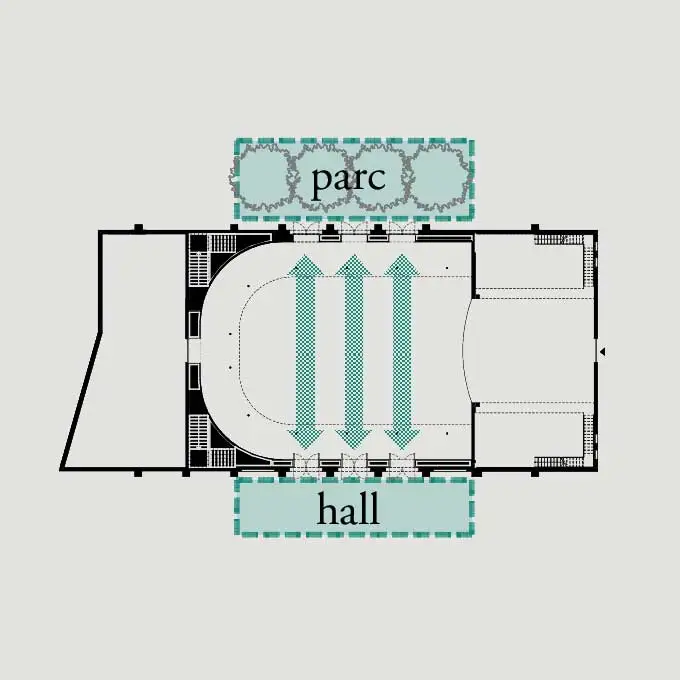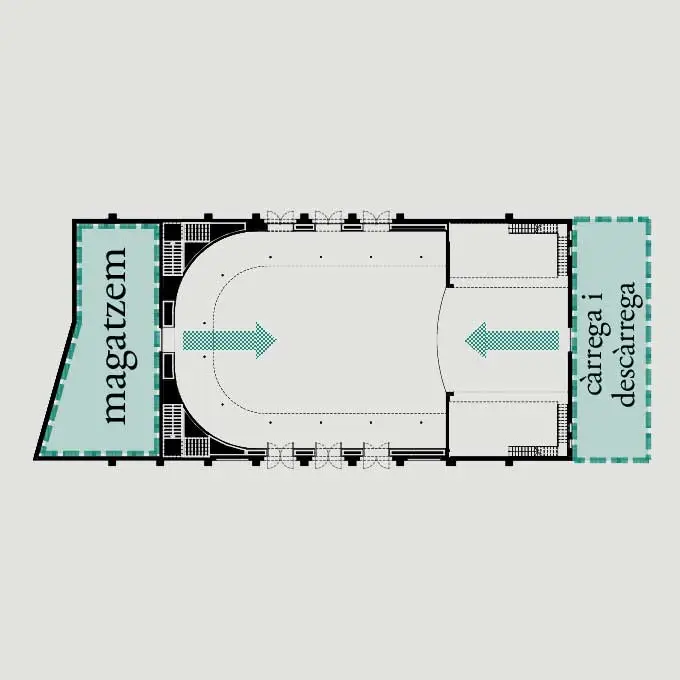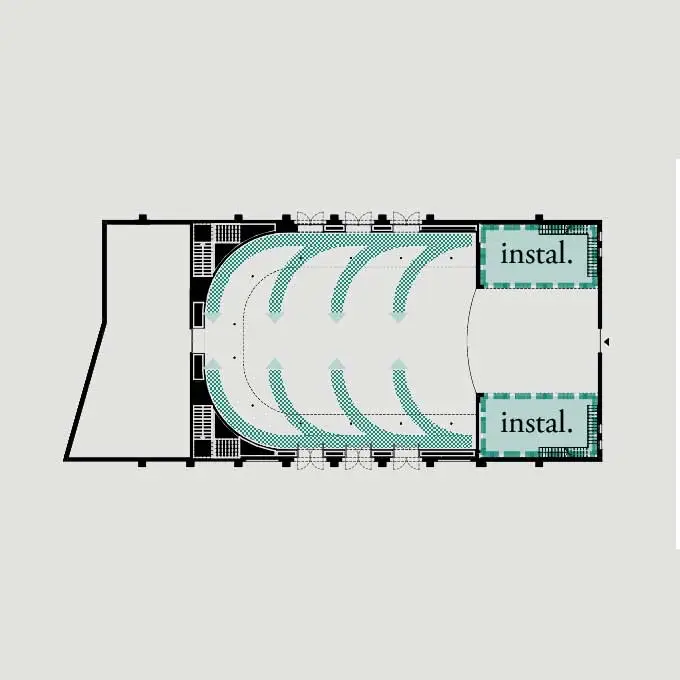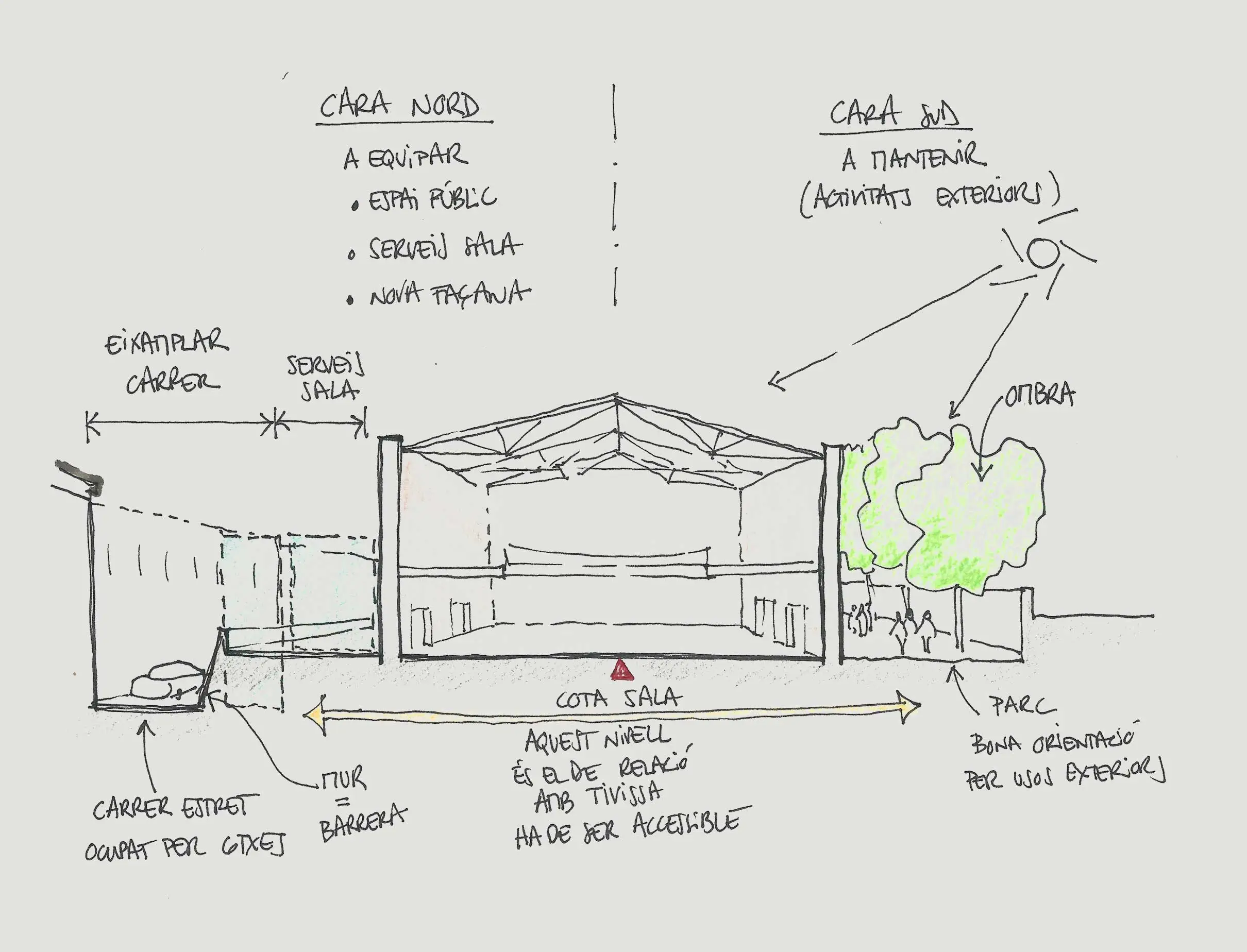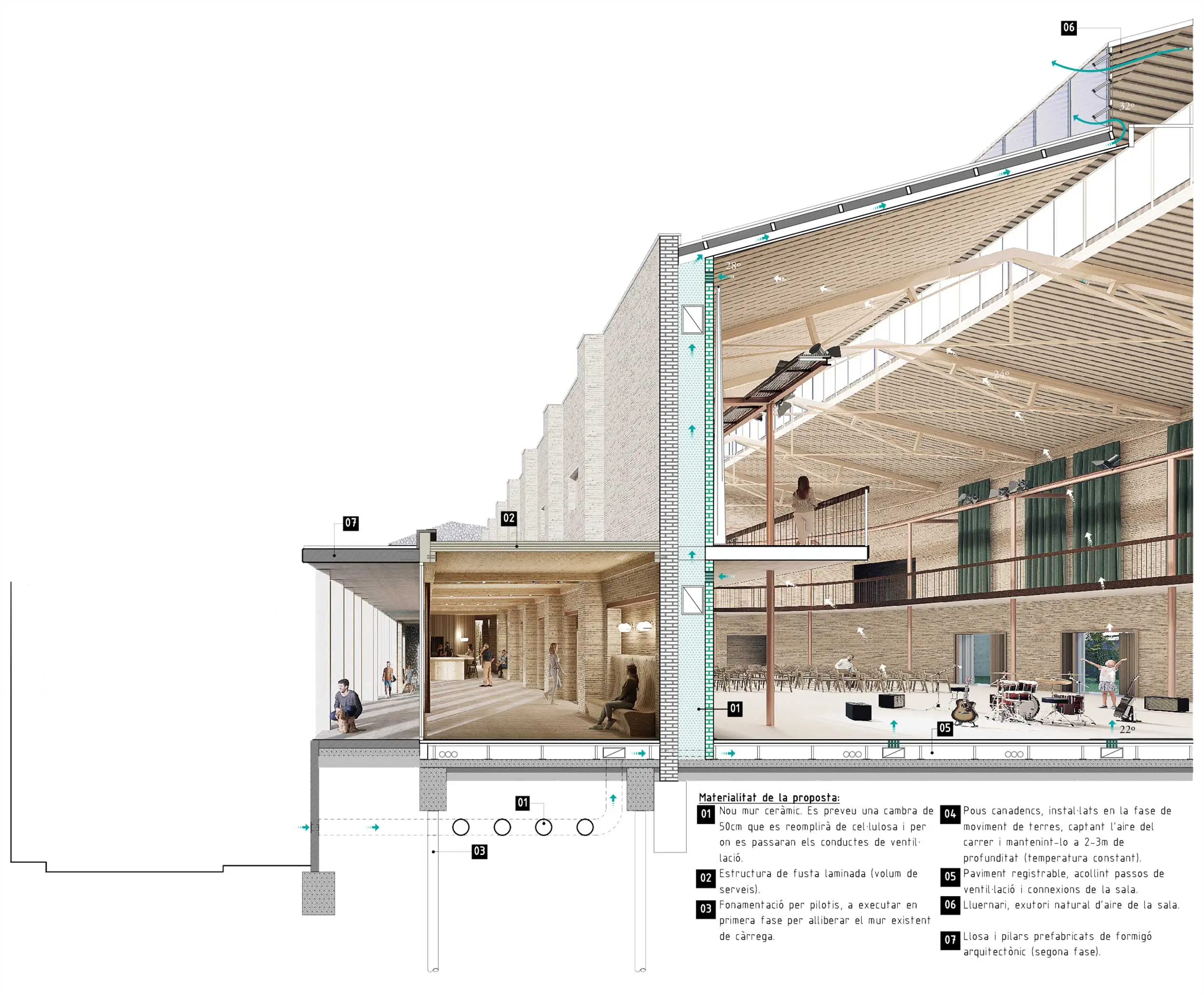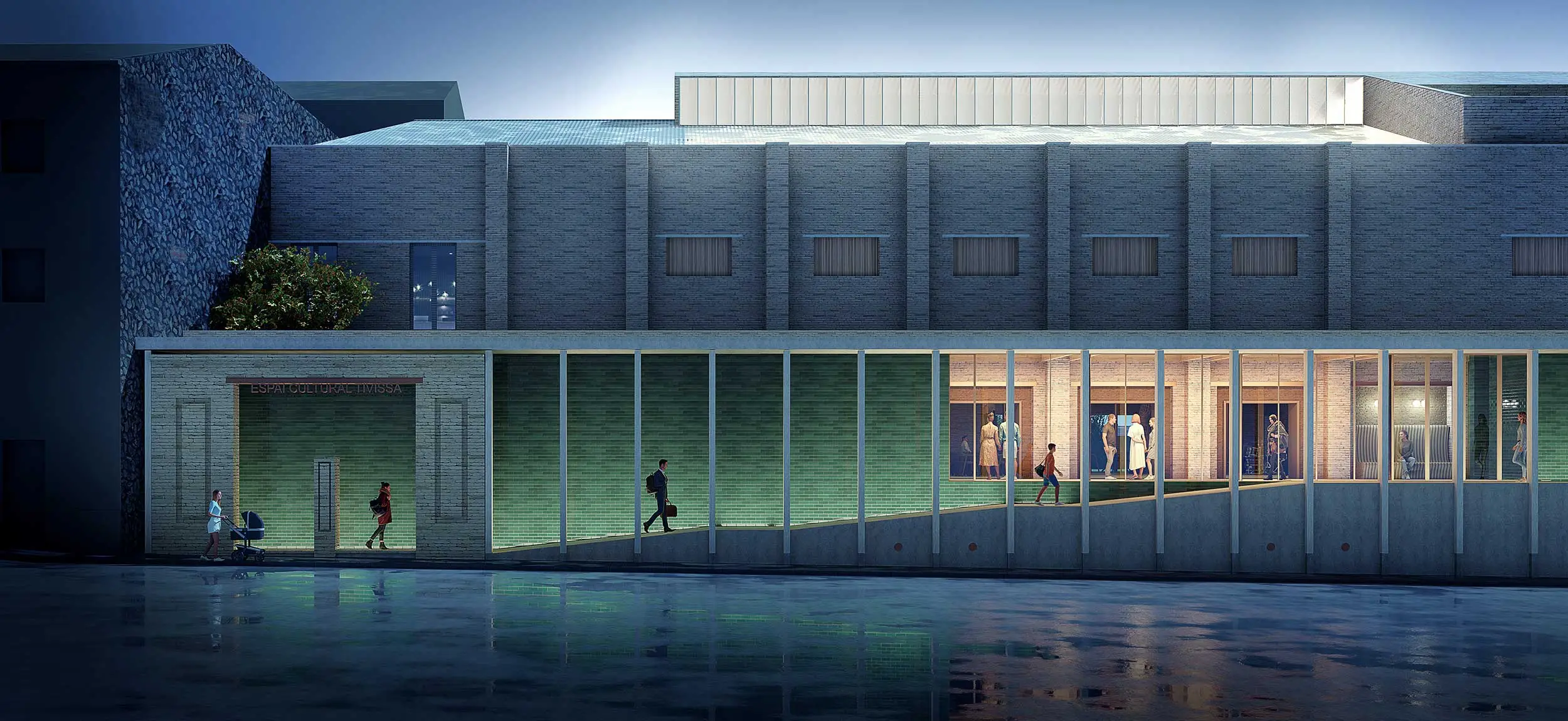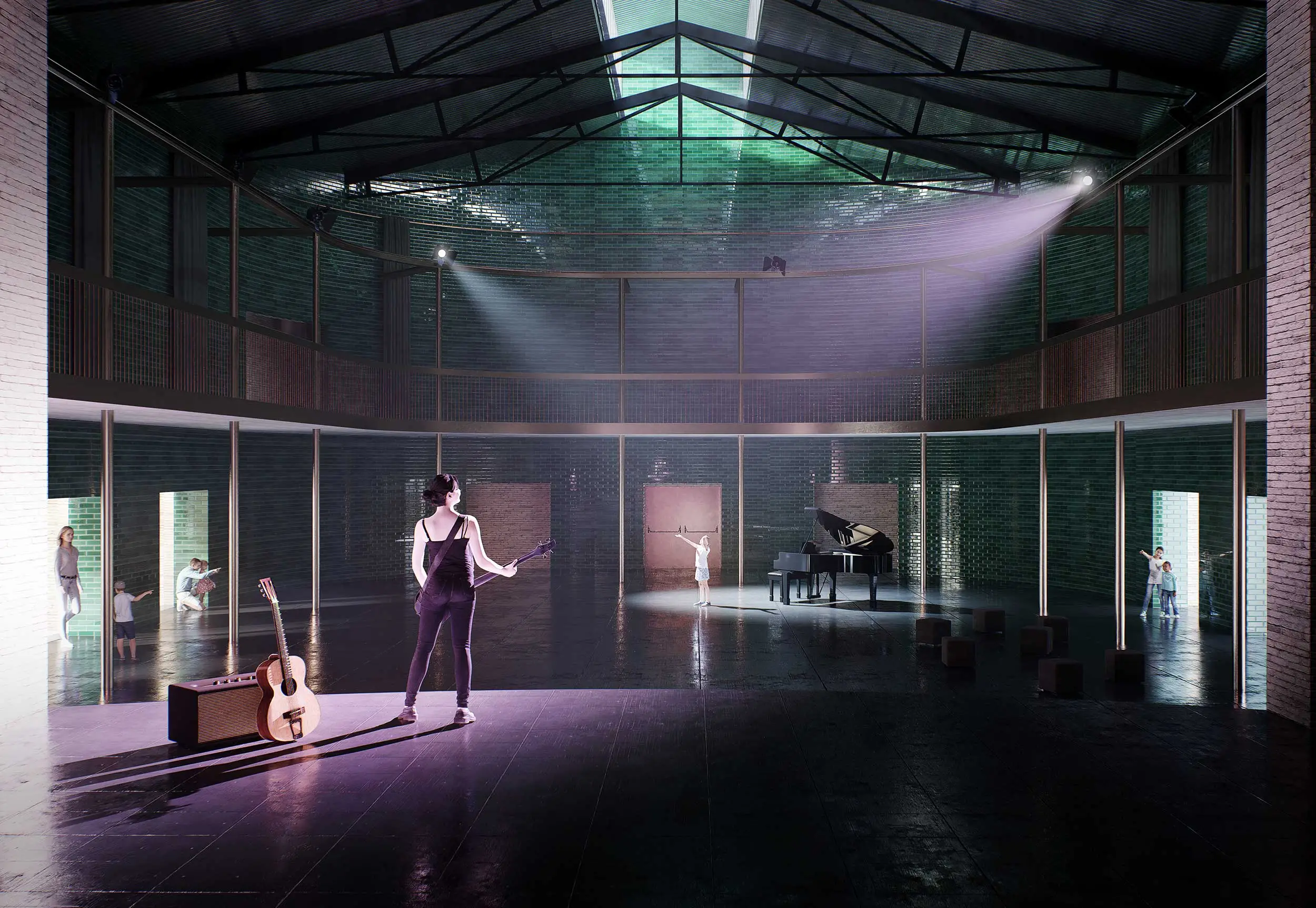Location
Tivissa, Tarragona
Category
Public
Status
Competition (Finalist)
Year
2022
In the rugged territory of Tivissa, the mountain dictates its rhythm. For centuries, this landscape has been shaped by human hands through agricultural terraces, stone walls, and pathways that both contained and connected the land. These gestures – modest yet enduring – transformed the open terrain into something habitable, domestic, and human. The new social and cultural centre of Tivissa continues this dialogue. It emerges not as an isolated object but as an extension of this ancient logic of walls and boundaries: a place where architecture becomes the threshold between cultivated land, urban fabric, and community life.
What once stood as an agricultural warehouse at the edge of the village has now been reimagined as a civic space. The project does not erase the memory of the building, nor the imprint of its agricultural origins; instead, it builds upon them. The existing wall – once a boundary separating the warehouse from the street – becomes the starting point for transformation. Where the wall was formerly an obstacle, the intervention turns it into a façade, a threshold, a public gesture. It is no longer an impermeable barrier, but a surface of encounter between the town and its new cultural centre.
As Tivissa grew, the warehouse that had once been set apart became absorbed into the urban fabric. The wall, initially a contour of topography and farmland, was suddenly a limit of the street – opaque and excluding. The project begins by questioning this condition. How can the wall be equipped, thickened, and transformed into an active edge of public life?
The strategy is deliberately minimal: rather than demolishing or imposing, the intervention stitches together existing topographies and circulation routes. The historic gate on Carrer Padrells becomes the main access once more, anchoring the building in the memory of the village. From the north, the wall extends into a ramped façade that mediates between the level of the street and the level of the hall. From the south, new openings face the green space, bringing sunlight and shade, and connecting the building to the landscape.
The project seeks precision rather than expansion. It is not about adding more, but about transforming the existing into an opportunity for civic life. In this way, the wall becomes a place to walk along, to lean against, to pass through – a civic gesture that enriches the public realm while preparing the visitor for the experience inside.
The village of Tivissa rises at the foot of the Muntanyes de Tivissa, where cultivated terraces meet the rugged mountain slopes. History here is inscribed in stone – from the church that crowns the settlement to the fields that once defined its economy. The new cultural centre belongs to this continuum, rooted in a landscape where architecture, memory, and mountain are inseparably bound.
What was once an opaque limit now becomes a new civic front. By conserving the existing structure and layering it with new services, the intervention equips memory with function. The added route transforms the wall into a place of movement and encounter, where the continuity of history and the vitality of the present converge in one architectural gesture.
The intervention unfolds in stages, responding to economic and temporal realities but also to the logic of construction. The first phase establishes the heart of the building: the large hall, together with the reception, services, and backstage areas. This ensures that from the outset, the building can function as a gathering space for the community.
The second phase completes the transformation of the wall. Prefabricated concrete elements are inserted as a new permeable filter, creating a walkway that connects the street with the hall, and weaving together the levels of Carrer Padrells (+313) and Carrer Rocaverdura (+316). By treating the wall as both façade and infrastructure, the intervention makes the transition between urban scales tangible.
This phasing strategy ensures continuity: each stage is complete in itself, yet anticipates the next. It is a way of building that respects resources, avoids redundancy, and allows the community to inhabit the project progressively.
The 1945 photograph reveals a landscape written in terraces, where agriculture once defined the form of Tivissa. These lines are more than infrastructure: they are memory etched into the mountain. The new cultural centre arises from this same respect for place, treating architecture not as an imposition but as a continuation of the gestures that shaped the land.
The project transforms the old boundary into a new civic route. By equipping the existing wall with services and circulation, the building gains a renewed façade while keeping its memory intact. The gesture is minimal yet powerful: a passage that stitches street and hall together, giving new life to the past without erasing its presence.
At the centre of the intervention lies the hall – the communal hearth of Tivissa. Its design is guided by both acoustic and climatic considerations, solved through a single architectural gesture: an inner ceramic wall shaped like a horseshoe.
Acoustically, the curved form concentrates sound towards the centre, while heavy curtains can be drawn to absorb and soften reverberation as needed. This adaptability allows the hall to host a diversity of events: concerts, theatre performances, assemblies, and informal community gatherings.
Climatically, the ceramic wall doubles as a thermal device. Beneath the hall, Canadian wells capture air at a stable underground temperature, preconditioning it before releasing it into the hall through the floor. The air then rises naturally and escapes through a skylight at the roof, functioning as a chimney. In summer, this ensures natural cooling; in winter, it allows controlled ventilation without losing acoustic performance. The result is a space that breathes – simultaneously closed and open, resonant and calm.
The hall is not conceived as a neutral container but as a room with character: warm, tactile, and flexible. Its materiality – brick, timber, and prefabricated concrete – speaks of permanence and humility, while the play of light through skylights animates the space with temporal rhythms.
Old brick and new ceramic walls work together as one system. Acoustically, the curved inner wall concentrates sound, while curtains soften it when needed. Thermally, underground air channels temper the climate, releasing warmth or coolness through the skylight. What was once a boundary becomes a living mechanism, balancing comfort, resonance, and continuity between past and present.
The material palette is deliberately restrained, echoing the sobriety of agricultural constructions. Ceramic brick walls recall the memory of rural warehouses, while timber beams bring warmth and a human scale to the large volume. Prefabricated concrete slabs and pillars ensure structural clarity and durability.
The walls are not treated as flat surfaces but as porous filters. Niches, thresholds, and layers of texture create depth and shadow. From the outside, the façade reads as rigorous and abstract, avoiding ornament so as not to compete with the existing building. From the inside, materials are tactile and close, inviting touch and inhabitation.
This essentialist approach ensures a timeless atmosphere. The architecture avoids unnecessary gestures, focusing instead on the qualities of proportion, material, and light. In doing so, it resonates with the agricultural logic from which it originates: economy of means, precision of placement, durability over time.
1. Connecting the Hall with the Street
The hall is conceived as a porous civic room, opening its flanks to both the street and the park. Large operable closures allow the building to breathe with the seasons: shaded trees extend activities outdoors in summer, while in colder months the hall remains sheltered yet visually connected. This fluid boundary transforms the hall into more than an interior; it becomes a gathering ground for Tivissa, a place where daily life and cultural events flow seamlessly between public space and the protected heart of the building.
2. Storage and Direct Access
By relocating the main entrance, the old hall is redefined as a storage space with direct access to the stage. This precise move ensures smooth logistics: equipment can be stored, moved, and deployed without disturbing public areas. Deliveries and technical operations remain discreet, allowing the hall to maintain its serene presence. This hidden support system provides flexibility for concerts, performances, or assemblies, ensuring the space can adapt to changing needs while preserving its essential clarity as Tivissa’s cultural hearth.
3. The Ring of Installations
The new ceramic wall becomes both structure and infrastructure. Tracing the old enclosure, it creates a continuous ring where installations are carefully integrated: ventilation ducts, lighting systems, and technical equipment circulate invisibly within. This strategy frees the central space from clutter, allowing the hall to remain calm and timeless while meeting professional demands. The wall thus mediates between tradition and technology, ensuring comfort, acoustics, and adaptability. It is architecture that conceals complexity behind simplicity, supporting Tivissa’s cultural life with quiet efficiency.
Southwards, the architecture stays porous and green, extending into the park and outdoor activities. Northwards, it becomes equipped: a new public façade, services, and spaces that anchor the building within the urban fabric. This dual condition – openness on one side, structure on the other – defines the cultural centre as both refuge and connector, civic wall and living landscape.
Perhaps the richest spaces are those between inside and outside – the in-between zones where public and private meet. The new façade towards the south is not merely a wall but an inhabited threshold: a shaded walkway, a place to gather before entering, a filter between the hall and the green park.
Light plays a central role. Openings are carefully oriented to capture sun and shade, while skylights above create ever-changing atmospheres throughout the day. In winter, sunlight penetrates deep into the hall, warming the interior. In summer, trees and architectural filters provide shade, keeping the interior cool.
The building becomes less an object and more a mediator: between street and landscape, history and present, openness and intimacy.
The wall is no longer a barrier but a mediator. Masonry and ceramic overlap, forming a double skin that refines sound and stabilizes temperature. Underground wells cool or warm the air, while the skylight releases it naturally. This quiet dialogue between old and new creates a hall that is both protective and open, precise and adaptable.
In the end, the true success of the building lies not in its form, but in the life it enables: concerts that echo against ceramic walls, assemblies warmed by winter sun, informal gatherings shaded by the south façade. It is in these everyday moments that architecture fulfills its role – quietly, gracefully, and with a sense of timeless belonging.
Beyond its technical and spatial strategies, the project expresses a civic ambition. By reusing the agricultural structure and transforming its wall into a shared threshold, the building acknowledges the collective memory of Tivissa while opening it to new uses.
The intervention is rigorous yet humble. It does not impose a new monument but carefully prepares the conditions for life to happen: rehearsals, concerts, assemblies, exhibitions, everyday gatherings. Its abstraction allows the community to project their own meanings and rituals onto the space.
In this sense, the project is less about architecture as form, and more about architecture as infrastructure for community. A silent framework that supports wellbeing, conviviality, and collective memory.
“
The true architecture lies in the threshold: in the spaces between street and hall, inside and outside, past and present, where community life unfolds.
